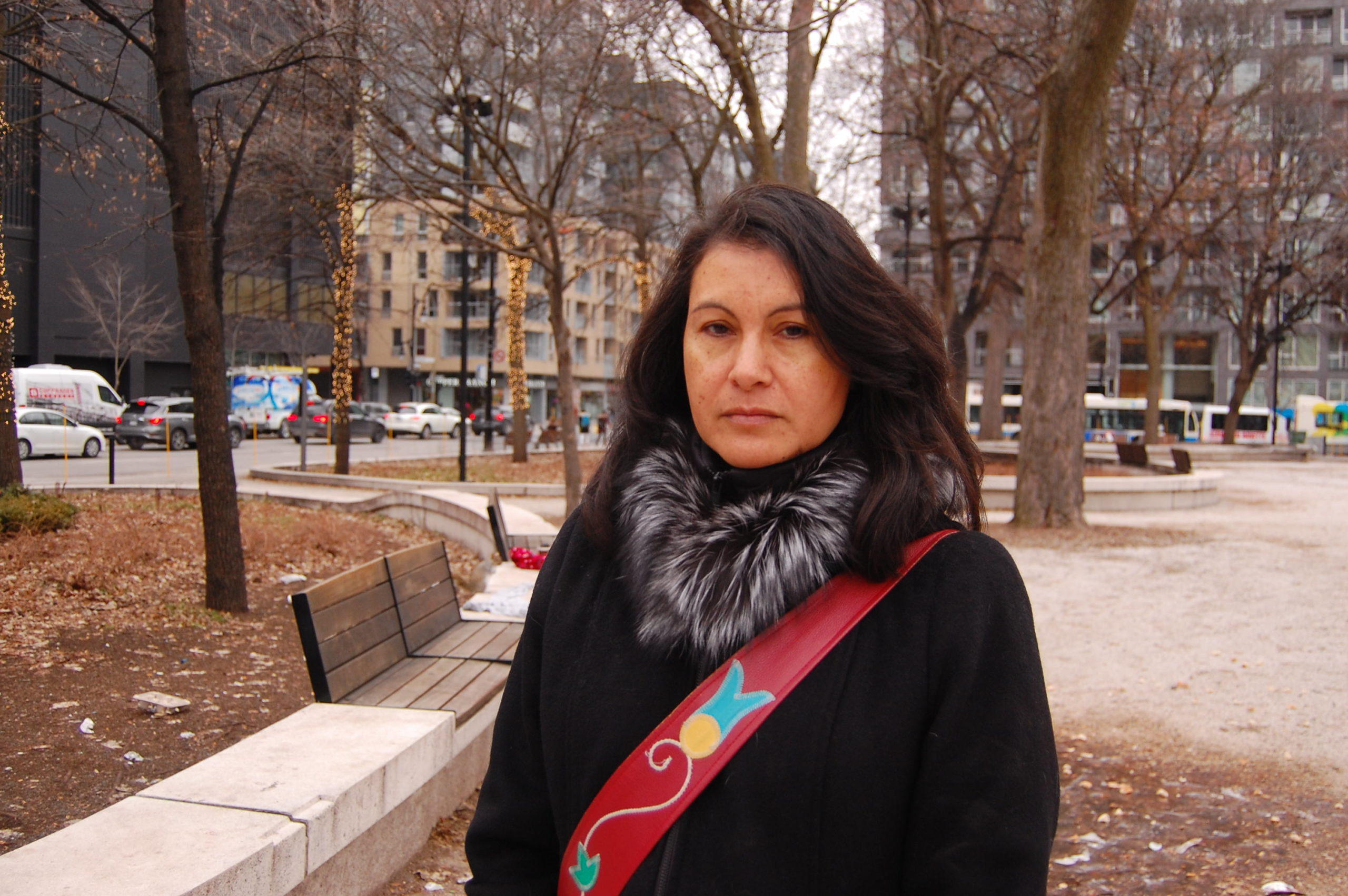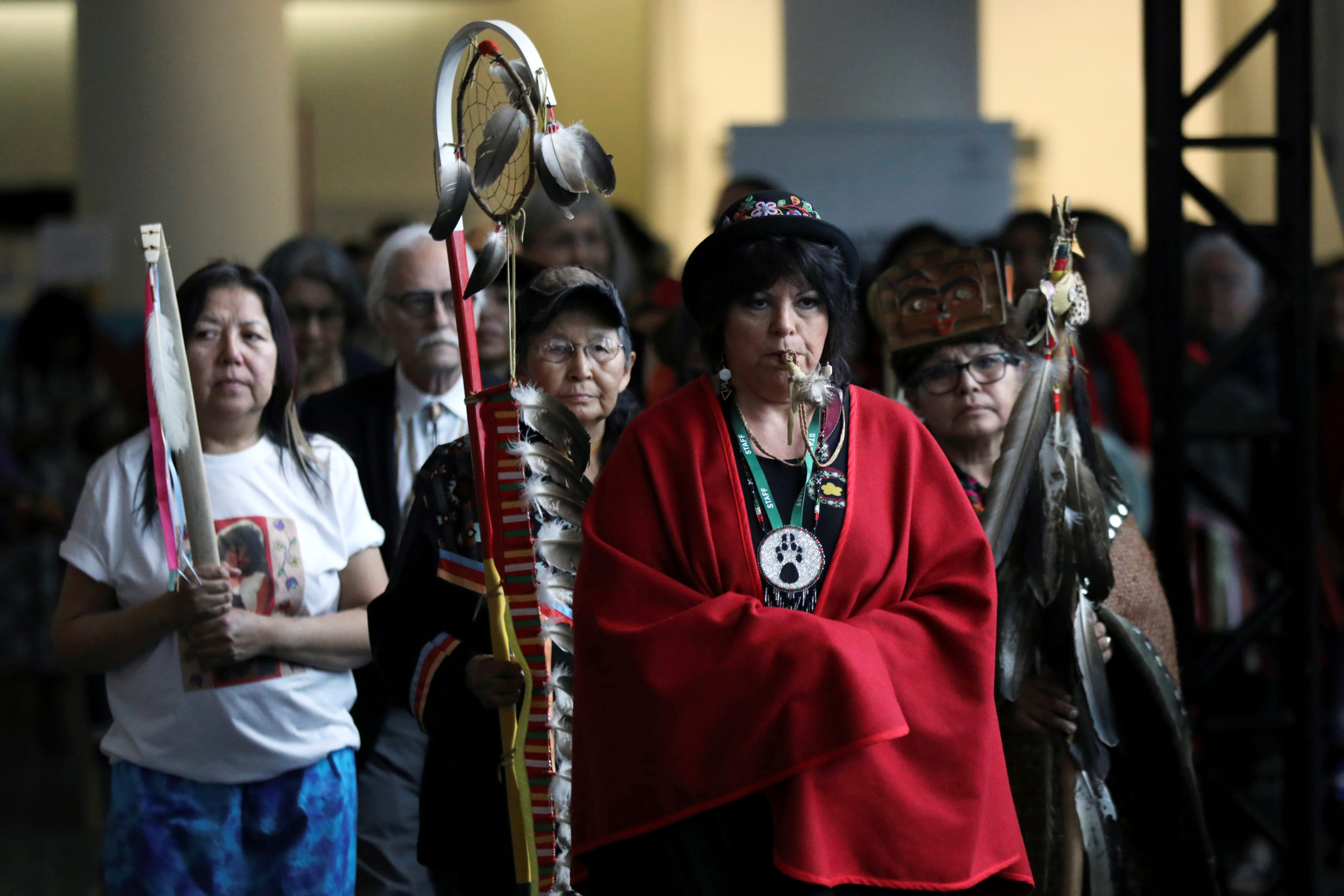‘Death sentence’: Indigenous groups shine a spotlight on Canada’s homelessness crisis
Canada's Indigenous housing efforts often focus on reserves — failing to serve those who live in urban centers, rural areas or northern regions.

MONTREAL — Nakuset was tired of waiting. So, when the Indigenous activist noticed a spike in deaths among Montreal’s homeless population, many of them from the Inuit communities in northern Quebec, she rang the alarm and alerted city authorities.
Then she collected the money and resources she needed to build Resilience Montreal, a downtown day center that offers food, shelter as well as mental health and medical support to the homeless.
“People had nothing to eat and they had nowhere to sleep,” Nakuset, who uses only one name, told the Thomson Reuters Foundation, referring to the closure of a former shelter.
The new center was named ‘Resilience’ “because we’re honouring the fact that you have been on the streets … and you’ve survived,” she added.
Research shows that Indigenous people, who make up about 5 percent of the country’s population, are disproportionately represented among Canada’s homeless.
A 2013 University of Alberta study found that one in 15 Indigenous people living in urban centers across the country were homeless, compared to one in 128 non-Indigenous people.
As Indigenous leaders urge the government to do more to stem the crisis, community workers say the lack of progress is pushing them to come up with their own solutions.

Open since November 2019, Resilience Montreal is located near Cabot Square, a park that has long served as a meeting place for members of the city’s homeless population — and indigenous people, in particular — said Nakuset.
Walking through the center’s brightly lit main room, where dozens of people sat at tables sharing coffee, toast and snacks, Nakuset said she created it when a local shelter was forced to move after a developer bought the facilities.
About 100 people now come to the center every day, added Nakuset, who also runs the Native Women’s Shelter of Montreal.
“Cabot Square is empty now; they’re here, they’re warm, they’re safe,” she said, sitting in the centre’s soon-to-be “wellness room,” where psychologists and other health workers will offer medical support.
Indigenous-led policy
Jesse Thistle, an assistant history professor at York University in Toronto, said the actual number of homeless Indigenous people in Canada may be three times higher than estimated.
Thistle, a member of the Metis and Cree indigenous communities and author of the memoir “From the Ashes” that details his own time living on the streets, said tackling Indigenous homelessness requires looking at the bigger picture.
“We have to look at these broader socioeconomic and political disconnections that have happened over time to Indigenous people,” he said.
That includes the dispossession of indigenous people from their traditional territories, and the lasting trauma associated with residential schools that ran from the 1840s to the 1990s, he said.
A Canadian policy of forcibly separating aboriginal children from their families and sending them to residential schools amounted to “cultural genocide,” found a 2015 report by the country’s Truth and Reconciliation Commission.
Thistle said the government also needs to invest in housing solutions that meet the specific needs of the Indigenous community.
According to the most recent census data, in 2016 less than half of the estimated 1.7 million Indigenous people in Canada were officially recognized as Indigenous by the government.
Of those, less than 45 percent lived on First Nations reserves, which were set up by the government under the Indian Act of 1876.
That means most Indigenous people live in urban centers, rural areas or northern regions, places that the government is all but ignoring as it focuses on Indigenous housing on the reserves, say rights groups.
“It’s not as simple as building a few houses in urban centers for Indigenous peoples … These housings have to be where (Indigenous communities) choose, and they have to be Indigenous-led,” Thistle said.
Christopher Simard, spokesman for Employment and Social Development Canada, a government body, said improving Indigenous housing is a priority, including “investments to stabilize and improve the existing urban indigenous housing stock.”
“There is still much work to do, which is why we will continue to work with Indigenous partners and housing providers to address the housing needs of Indigenous peoples living in urban, rural and northern communities,” he said in emailed comments.
Cut out of the conversation
In 2017, the Canadian government unveiled what it said was the country’s first National Housing Strategy.
The program, costing C$55 billion (more than $40 billion), promises to slash homelessness by half over a 10-year period as well as create new affordable housing opportunities.
But critics say the NHS has largely failed to consider the needs of Indigenous people.
Indigenous service providers “very much need to be leading this and being a main part of this conversation. And they’ve been cut out so far,” said Leilani Farha, the U.N. special rapporteur on adequate housing.
In December 2019, a coalition of Indigenous housing groups called on Prime Minister Justin Trudeau’s new minority government to create a national strategy that would be implemented and led by Indigenous service providers.
That strategy would need to also address the issues surrounding the high rate of homelessness among Indigenous people, such as increased risks of violence, said Farha in a phone interview from the capital Ottawa.
A lack of access to adequate housing was brought up “something like 245 times” during a nationwide inquiry into missing and murdered Indigenous women and girls, which released its final report in June 2019, she noted.
For Indigenous women and girls, “living on the streets is tantamount to a death sentence”, Farha said.
‘Trauma with a capital T’
At Resilience Montreal, project coordinator David Chapman said that because of the violence many indigenous homeless people have experienced the center rejects the philosophy that homeless shelters need only offer minimal comforts.
“What we’re trying to do here is to do the exact opposite of sparseness — to actually spoil people a bit, treat them with some dignity and respect so that they can begin to think of themselves as worthy of dignity and respect,” he said.
Chapman told the Thomson Reuters Foundation that many Indigenous clients who frequent the center have been through “trauma with a capital T” and the center seeks to give them the support they need to heal.
“If you’re going to move forward with that you need to have some sense that there’s something worth fighting for, that there’s a human being worth saving,” he said.
Thomson Reuters Foundation is the charitable arm of Thomson Reuters, that covers humanitarian news, women’s and LGBT+ rights, human trafficking, property rights, and climate change.